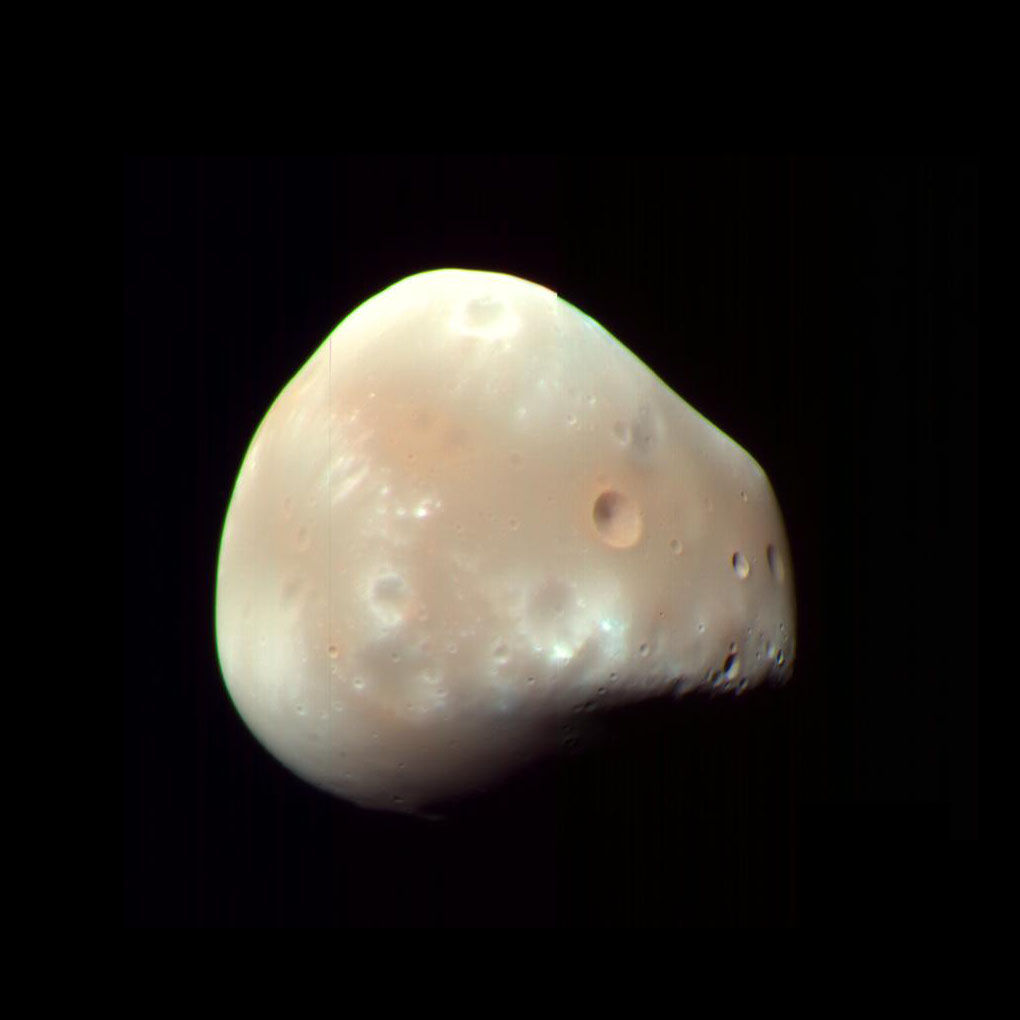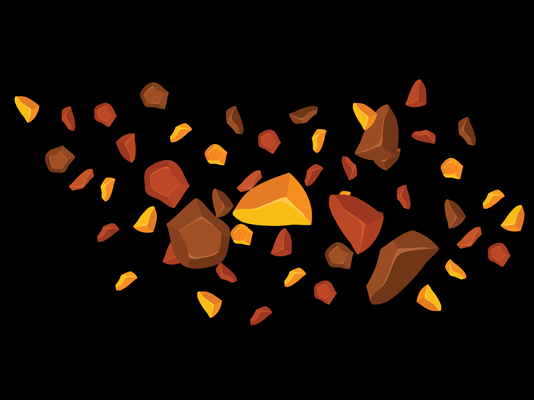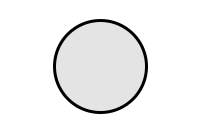Deimos, a moon of Mars

Deimos from Mars Reconaissance Orbiter, Feb 2009. Image Credit: NASA/JPL-Caltech/University of Arizona
14,579 miles
8 miles
Deimos is the smaller and more distant of Mars’s two moons, measuring just 15 kilometres across at its widest point. It was discovered on 12 August 1877 by American astronomer Asaph Hall, just six days before he found Phobos.
Deimos orbits much farther from Mars than Phobos and takes just over 30 hours to complete one trip around the planet. This means it rises in the east and sets in the west, moving more slowly across the Martian sky than Phobos.
Compared to its larger sibling, Deimos has a much smoother appearance. This is because its craters have been partially filled in by a blanket of fine regolith, which is powdery dust and debris that has accumulated over billions of years. The largest craters on Deimos, Swift and Voltaire, are named after authors who speculated about Mars having two moons long before their discovery.
Like Phobos, Deimos is thought to be made of dark, carbon-rich rock, possibly a captured asteroid from the outer asteroid belt or debris from a massive Martian impact. However, unlike Phobos, which gets a couple of centimetres closer to Mars each year, Deimos is slowly moving away from Mars and may eventually drift free of the planet’s gravity.
In Greek mythology, Deimos is the personification of dread or terror, and the twin brother of Phobos. The sons of Ares (Mars) and Aphrodite (Venus), the brothers accompanied their father into battle.
The name was chosen by Asaph Hall in 1877, keeping with the tradition of naming Mars’s moons after mythical figures associated with war. Together, Phobos (“fear”) and Deimos (“terror”) are fitting companions for the red planet.





